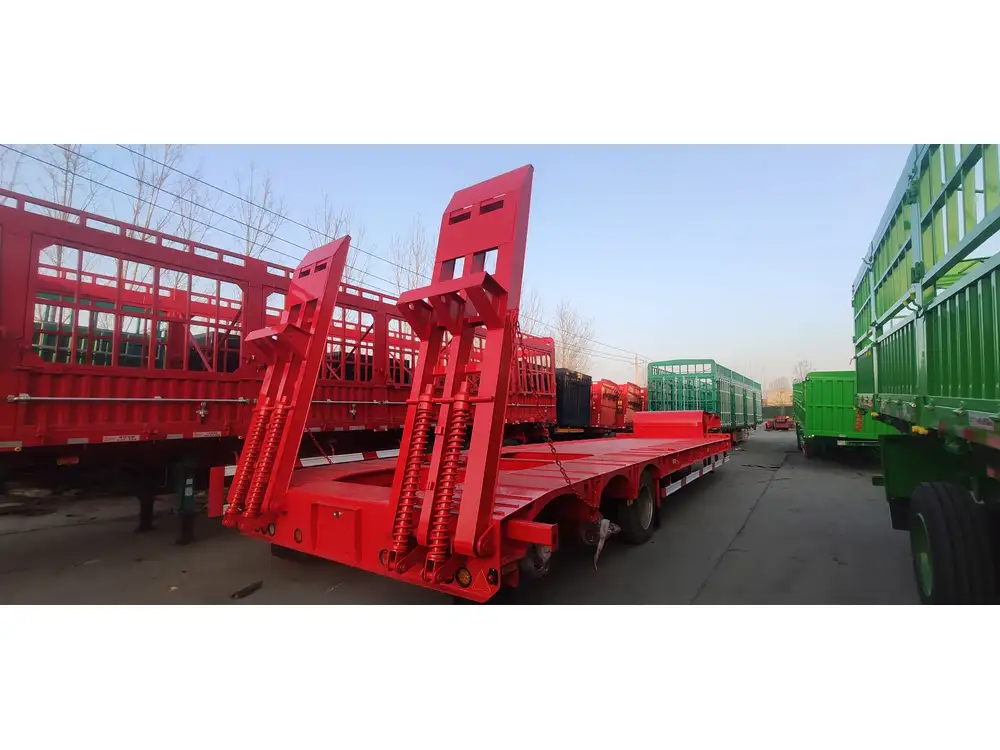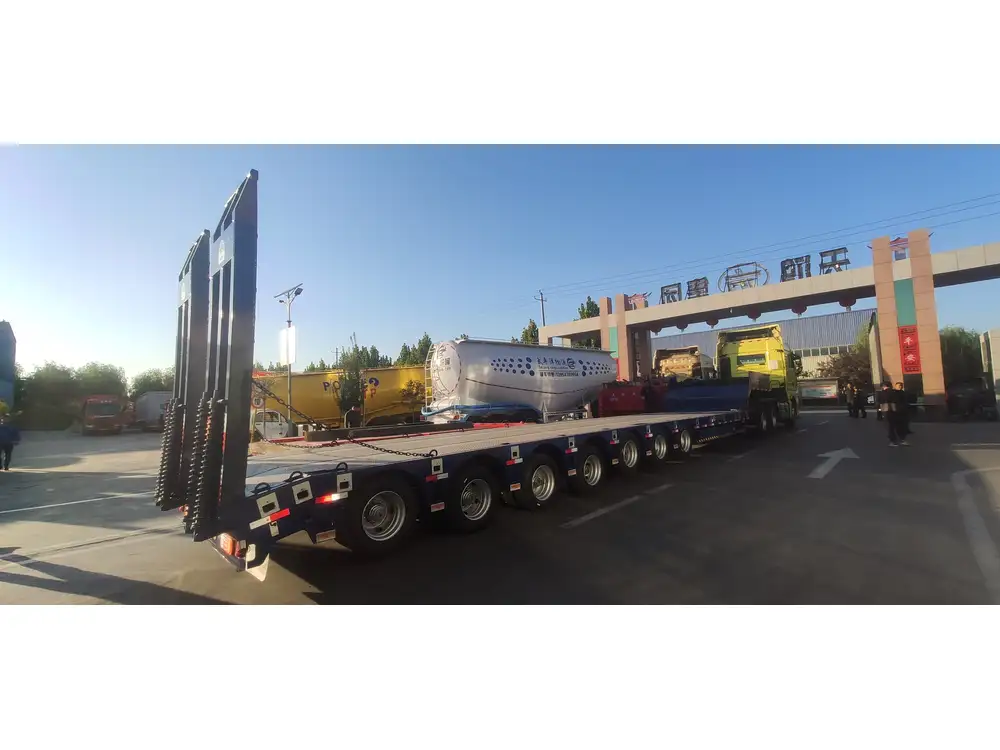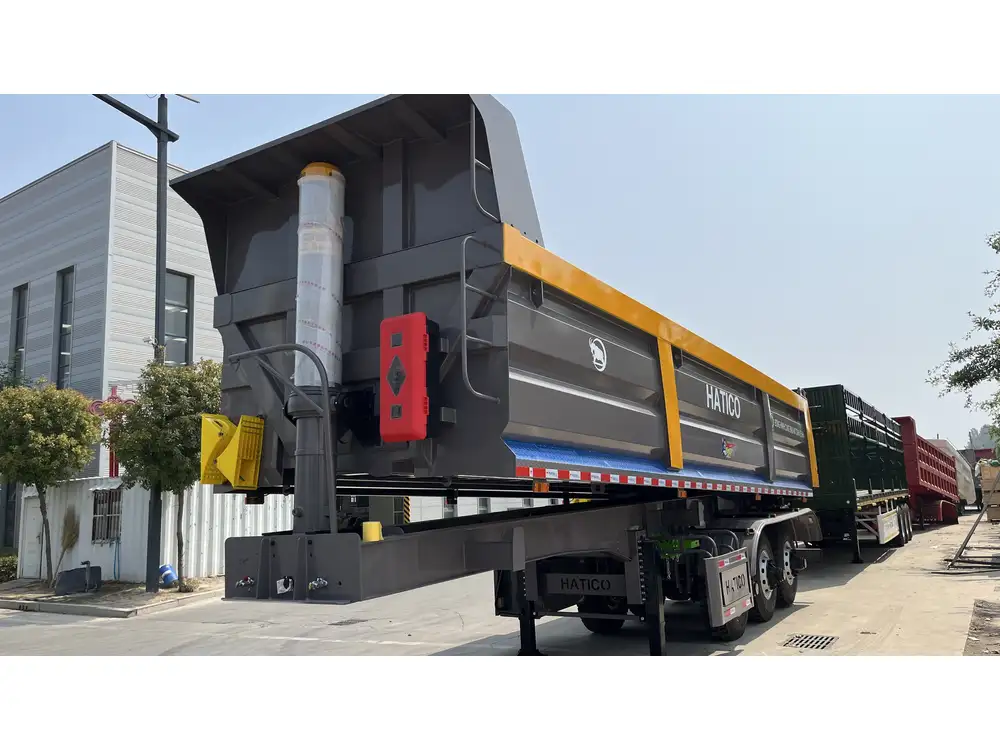Dump trailers serve an essential function in numerous industries, from construction to agriculture. At the core of their operation lies a component often overlooked but highly crucial— the solenoid. In this detailed exploration, we will dissect the workings of a solenoid in a dump trailer, unravel its significance, and shed light on associated concerns to help users understand this key component better.
What is a Solenoid?
A solenoid is an electromagnetic device that converts electrical energy into mechanical motion. It generally consists of a coil of wire, a movable iron plunger, and a return spring. When electricity flows through the coil, it generates a magnetic field that moves the plunger, enabling various mechanical actions.
Types of Solenoids
| Type of Solenoid | Application | Advantages |
|---|---|---|
| Linear Solenoid | Lifting and lowering | Direct motion, simple |
| Rotary Solenoid | Engine starters | Versatile, torque |
| Solenoid Valve | Fluid control | Quick response, efficient |

The Function of a Solenoid in a Dump Trailer
In dump trailers, solenoids play a pivotal role in controlling the hydraulic systems that raise and lower the trailer bed. Here’s a step-by-step breakdown of the process:
- Electrical Signal Activation: The vehicle’s control system sends an electrical signal to the solenoid.
- Magnetic Field Creation: The solenoid activates, generating a magnetic field that pulls the plunger or armature.
- Hydraulic Valve Engagement: The movement of the plunger actuates a valve that directs hydraulic fluid to the lift cylinders.
- Bed Lifting and Lowering: As hydraulic fluid enters the lift cylinders, it raises or lowers the dump trailer bed as needed.
Importance of the Solenoid in Dump Trailers
Precision Control
The solenoid facilitates precise control over the dump trailer’s operation, enabling users to dump loads with accuracy and minimize waste. This precision is vital when dealing with materials that require exact placement.

Safety Features
Equipped with safety mechanisms, solenoids can prevent accidental dumping. For instance, many systems require activation of both the solenoid and the truck’s ignition, ensuring that the operator is deliberate about the dump action.
Common Issues with Solenoids in Dump Trailers
Despite their robust design, solenoids can encounter issues that may impact the functionality of dump trailers. Here are some common problems:
| Problem | Symptoms | Potential Solutions |
|---|---|---|
| Burned-Out Solenoid | No response to controls | Replace solenoid; check wiring |
| Sticking Plunger | Intermittent operation | Clean the solenoid; check for debris |
| Corrosion or Rust | Visible damage, wear | Use weatherproof solenoids; regular inspection |
| Electrical Short Circuits | Erratic functioning | Inspect electrical connections and fuses |
How to Troubleshoot Solenoid Issues
When facing issues with dump trailer operations, proactive troubleshooting is essential. Here’s a structured approach for identifying potential solenoid issues:
- Visual Inspection: Inspect the solenoid for any visible damage, corrosion, or wear.
- Electrical Testing: Use a multimeter to check for continuity and ensure that the necessary voltage is present.
- Check Connections: Ensure that all electrical connections are secure and free from corrosion.
- Actuator Testing: Test the solenoid actuator to ensure it moves smoothly and isn’t jammed.
- Replacement: If no other issues are found, consider replacing the solenoid with a high-quality component.

Choosing the Right Solenoid for Your Dump Trailer
Selecting an appropriate solenoid for your dump trailer is pivotal for optimal performance. Here are some factors to consider:
Voltage Requirements
The solenoid must match the electrical system voltage of your dump trailer. Typically, trailers operate on either 12V or 24V systems. Ensure correct voltage compatibility to prevent operational failures.
Duty Cycle Rating
Understanding the duty cycle rating is crucial. This rating indicates how often a solenoid can operate without overheating. For heavy-duty applications, look for solenoids designed for higher duty cycles.

Environmental Considerations
Given the outdoor applications of dump trailers, consider solenoids built to withstand harsh environments. Features like weatherproof casing can protect against moisture, dust, and extreme temperatures.
Brand and Quality
Research reputable brands known for durable and efficient solenoids. Investing in quality components from established manufacturers can reduce the risk of failures and extend the lifespan of your dump trailer.
Maintaining Your Solenoid and Hydraulic System
Proper maintenance of the solenoid and hydraulic system can prevent issues and ensure long-lasting performance. Here’s a maintenance checklist:

Regular Inspections
- Monthly or bi-monthly inspections of electrical connections, hoses, and the solenoid itself can help identify potential problems early.
Cleaning
- Thoroughly clean the solenoid and surrounding areas to prevent debris from interfering with its operation.
Fluid Levels
- Regularly check and maintain hydraulic fluid levels. Low fluid can result in inadequate function and strain on the solenoid and hydraulic components.

Replacement Schedule
- Establish a schedule for replacing older solenoids, typically every few years or based on usage, to prevent unpredictable failures.
Understanding Wiring and Electrical Systems in Dump Trailers
Diagram Overview
Creating a basic wiring diagram can clarify the connection between the solenoid, the hydraulic system, and the power source.
Example Wiring Diagram:
[Battery] ---> [Switch] ---> [Solenoid] ---> [Valve] ---> [Hydraulic Pump]
Electrical Safety Tips
- Always disconnect the battery before performing maintenance on electrical systems to avoid shocks.
- Confirm proper grounding of all components to prevent electrical shorts.
Legal Compliance and Safety Regulations
Importance of Compliance
Compliance with safety regulations is paramount when working in environments using dump trailers. Many jurisdictions have requirements concerning hydraulic systems and equipment safety. Ensuring your dump trailer meets these standards not only promotes safety but also mitigates legal risks.

Key Regulations to Consider
- Check local laws regarding the transport of bulk materials and secure load requirements.
- Review OSHA and EPA guidelines relevant to your industry to align your operations with legal standards.
Conclusion: The Critical Role of Solenoids in Dump Trailers
Understanding the pivotal role that solenoids play within dump trailers equips operators with knowledge that can enhance operational efficiency and safety. By ensuring proper function, conducting regular maintenance, and selecting the right components, users can ensure optimal performance. Solenoids serve as the unsung heroes of hydraulic systems, enabling the powerful lifting and controlled dumping capabilities that are essential in a multitude of scenarios.
As we continue to innovate and refine our equipment, the importance of components like solenoids can’t be overstated—investing in quality, understanding safety, and embracing meticulous maintenance can significantly impact the longevity and reliability of your dump trailer operations.



